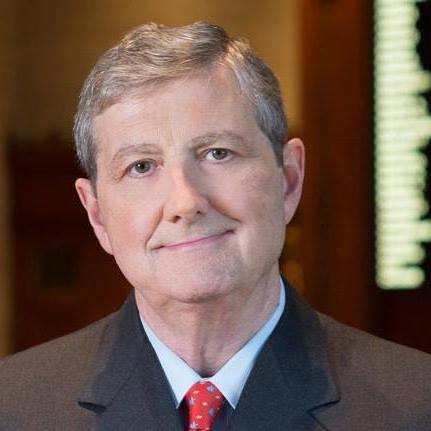
St. Patrick’s Day on the Bayou and Paddle Bayou Lafourche is This Saturday
March 7, 2022
Louisiana Senator Kennedy Releases Statement After Speaking with Ukrainian President
March 7, 2022By Ray Peters, MBA Director & Instructor of Leadership, Nicholls State University
Every semester, I define leadership for my students, something that’s easy for them to understand and remember. The first words out of my mouth, even before introductions, are: Leadership is the ability to make and sustain relationships and then influence through those relationships.
Leadership guru John Maxwell suggests that leadership is influence, “nothing more and nothing less.” That seems simple enough. However, after spending so many years in leadership roles, I can attest that it is not as simple as that might sound.
So, I started pondering creating something akin to a mathematical equation to illustrate leadership. As I processed that thought, it became clear that capturing all the variables in an equation would be difficult. While Leadership = Influence seems simple enough, it looks bare and doesn’t capture the essence of all the elements I associate with the word leadership. Here’s my attempt:
Ethics -> [Leadership = Influence (Relationships (Trust))] <- Ethics
To understand the equation, an examination of each element is needed.
When I think of Leadership, aside from influence, the first words that come to me are courage & kindness. Leaders must have the courage to act and the compassion to understand the impact of their decisions on those they lead. Other words and phrases that come to mind: Develop & communicate a vision, live values, be trustworthy & transparent, promote equality & inclusion, practice emotional intelligence, recognize success (say Thank You!), develop future leaders and address underperformance. There is so much more that I could add, but this article can’t exceed 600 words.
As a leader, you have boundless opportunities to Influence people and their performance. We believed that power was the primary driver of performance in prior years, but not today. Power is one-way authority, while influence allows greater employee inclusiveness, leading to higher satisfaction and retention. Think about it, would you prefer to work in an authoritarian environment or an environment where the culture is welcoming and participative?
It is unlikely to positively influence others unless you can establish a constructive Relationship with them. What are the critical elements of relationships you value most? Making yourself available to assist others is fundamental – showing up when needed. In relationships, people want to feel valued and treated respectfully. Communication is central, especially being available to listen. Meeting obligations and commitments and keeping your word is vital to sustaining constructive relationships.
The most critical element to building successful and satisfying relationships is Trust. Trust is the highway that all fulfilling relationships must travel. For this, I draw on the work of HBS Professors Frei and Morris. Looking from a follower’s viewpoint, they describe trust in the form of a “Trust Triangle,” which has three components: Authenticity (I experience the real you); Logic (I know you can do it; your reasoning and judgment is sound); Empathy (I believe you care about me and my success.) Frei and Morris suggest that if any of the three components “wobble,” leaders minimize the potential to establish and sustain trusting relationships. If your followers do not trust you, they will not follow you.
Lastly, and very importantly, all of the above is bracketed in Ethics. Although not singularly sufficient, I draw on #13 of Maxwell’s 21 Irrefutable Laws of Leadership, The Law of the Picture. Essentially, “People do what they see.” Maxwell writes, “When leaders show the way with the right actions, their followers copy them and succeed.” Creating a set of organizational values and leading through those values serves as a guide for all employees to follow. I have often said, determine the right thing to do and then do it, keeping in mind that everyone is watching.
The “Great Registration” is currently illustrating the importance of the above. Remember, people don’t leave organizations; they leave their leaders.







